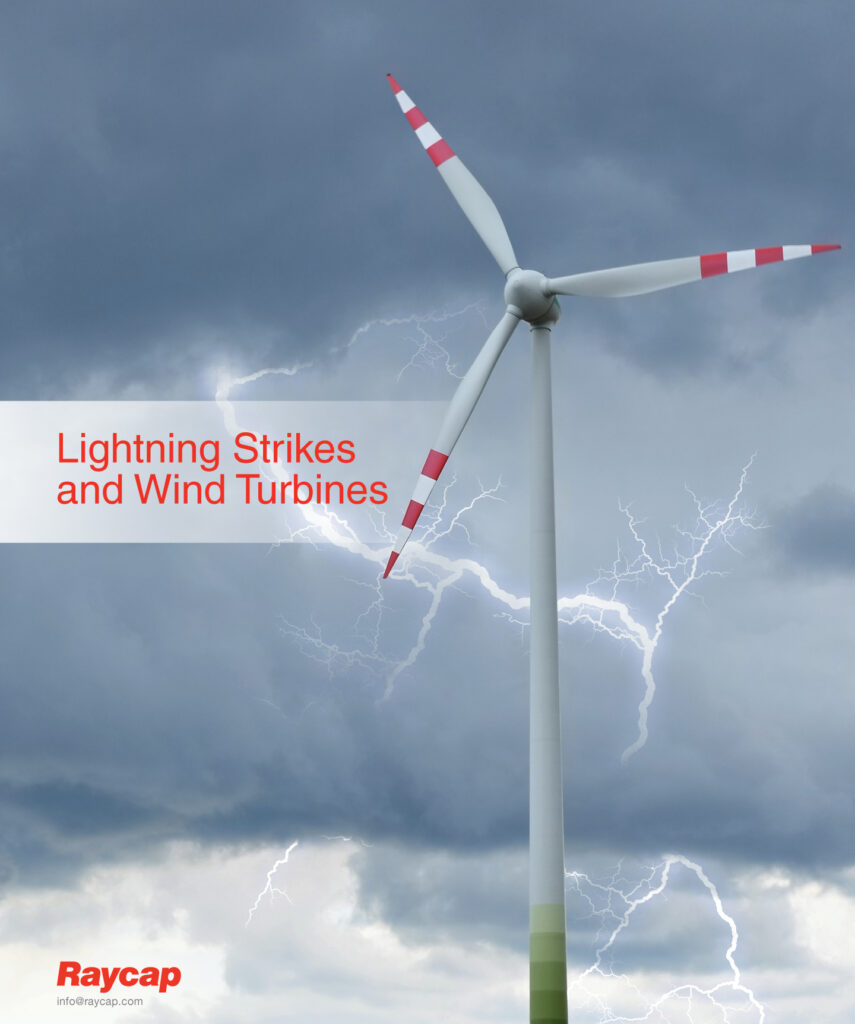Lightning Strikes and Wind Turbines:
Safeguarding Renewable Energy with Surge Protection
Wind energy has emerged as a prominent renewable energy source, providing a sustainable solution to our growing global energy demands. Wind turbines, standing tall as modern engineering marvels, convert wind power into electricity. However, as wind turbines are exposed to unpredictable weather conditions and natural phenomena like lightning strikes, they are vulnerable to overvoltages that can cause costly damage and downtime. Integrating surge protection into wind towers becomes crucial to safeguarding these valuable assets and ensuring efficient energy generation.
Surge protection is engineered to divert excess voltage, caused by lightning strikes, away from sensitive electronic equipment. Wind turbines are highly susceptible to lightning surges due to their location in open environments, exposure to frequent lightning activity, and complex electrical systems. Integrating surge protection into wind towers involves deploying specialized devices to safeguard the turbine’s electronic components, control systems, and communication networks from potential damage.
The primary advantage of integrating surge protection into wind towers is the protection it provides to critical electronic equipment. Surge protection devices redirect high voltage spikes away from sensitive electronic components, ensuring that the electrical systems within the turbine remain safe and functional. By mitigating the risks posed by surges, surge protection extends the lifespan of expensive turbine components, reducing maintenance costs and maximizing energy output. Wind energy is highly dependent on the consistent operation of wind turbines. Lightning events can cause unplanned downtime and extensive equipment damage, resulting in lost energy production and increased operational costs.
With industrial surge protection in place, the likelihood of downtime due to surge-related issues is significantly reduced, leading to improved turbine availability and lower operational expenses (OPEX). Surge protection ensures wind turbines operate optimally, even in harsh weather conditions. By preventing damage to electrical systems and control components, turbines can consistently harness wind energy, maximizing energy production and efficiency. Additionally, industrial surge protection improves the reliability of power electronics, such as inverters and converters, enhancing energy conversion efficiency. Integrating surge protection into wind towers helps maintain a stable power supply by preventing surge-induced power quality issues. Consistent and reliable power quality ensures seamless integration of wind energy into the grid and enhances the overall stability of the electrical system.
Wind turbines are typically located in remote or inaccessible areas. Personnel working on wind tower maintenance or repair are exposed to potential electrical hazards caused by power surges. Industrial surge protection devices reduce the risk of electrical accidents, ensuring a safer working environment for technicians. Additionally, surge protection minimizes the risk of fire and damage to surrounding structures, enhancing overall safety in the vicinity of the wind tower. Integrating surge protection into wind towers ensures compliance with industry standards and regulations. Wind turbines must adhere to safety and performance standards outlined by organizations such as the International Electrotechnical Commission (IEC) and the American Wind Energy Association (AWEA). Compliance with these standards demonstrates a commitment to safety and best practices in the wind energy sector.
Integrating surge protection into wind towers involves implementing a comprehensive protection strategy.
Site Assessment: Conducting a thorough site assessment to identify lightning-prone areas and potential risk factors is critical. This assessment helps determine the appropriate surge protection measures required for each wind tower.
Multi-Level Protection: Implementing a multi-level surge protection approach, including primary protection at the turbine’s electrical entrance and secondary protection at various critical components, provides comprehensive coverage against electrical surges.
Direct Strike Protection: Installing lightning rods and air terminals on the turbine’s nacelle and blade tips helps dissipate the energy from direct lightning strikes.
Data and Communication Line Protection: Protecting data and communication lines within the turbine, such as fiber optics and Ethernet cables, will ensure the integrity of turbine control systems and data transmission.
Coordinated Protection: Coordinating surge protection devices throughout the wind tower prevents redundancy and ensures optimal protection against power surges.
The integration of smart technologies, such as IoT sensors and remote monitoring systems, enhances the efficiency and effectiveness of wind tower protection. These devices are also vulnerable and must be protected by signal surge protection. These smart technologies enable real-time monitoring, remote diagnostics, and predictive maintenance, providing valuable insights into the turbine’s performance and status. As wind energy continues to evolve so will surge protection technology advances further to enhance the reliability and efficiency of wind towers.
The integration of surge protection into wind towers is a critical aspect of ensuring reliable and efficient wind energy generation. By safeguarding sensitive power and signal components, minimizing downtime, enhancing energy production, and ensuring personnel safety, surge protective devices optimize the performance and reliability of wind turbines. As the world moves towards a more sustainable energy future, investing in robust surge protection strategies becomes indispensable for harnessing the full potential of wind power and securing our path toward a greener tomorrow.

